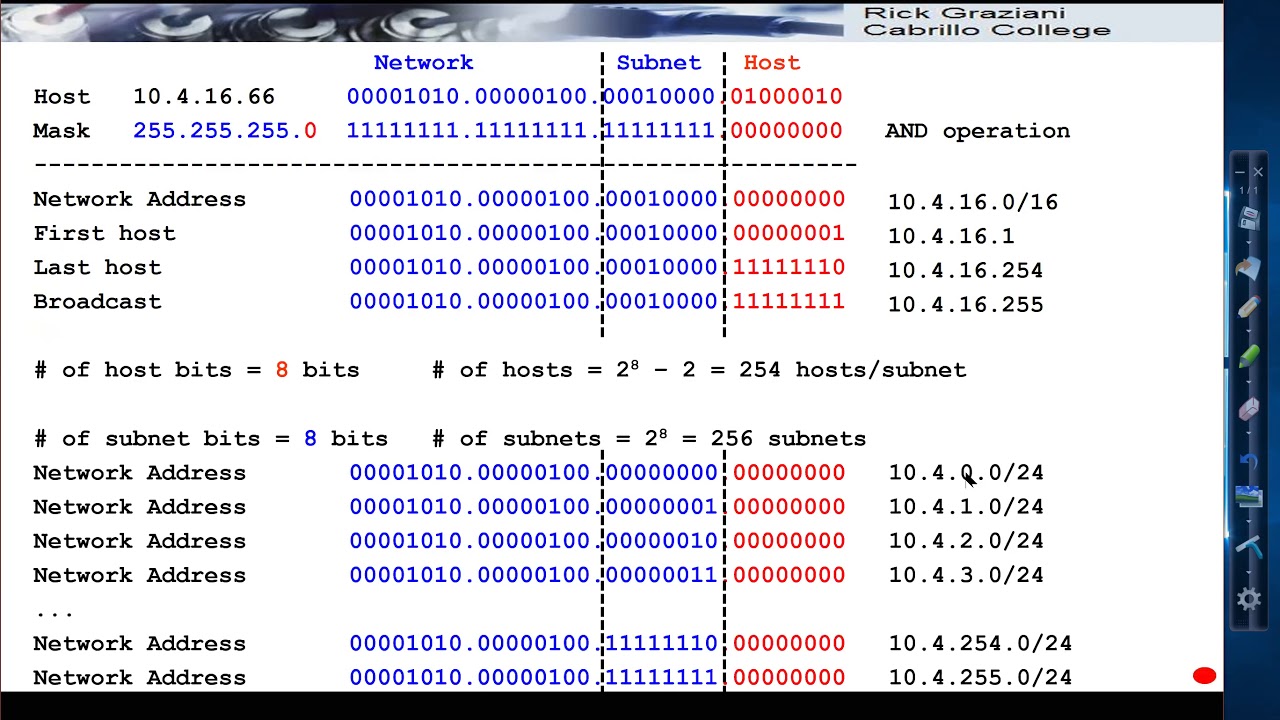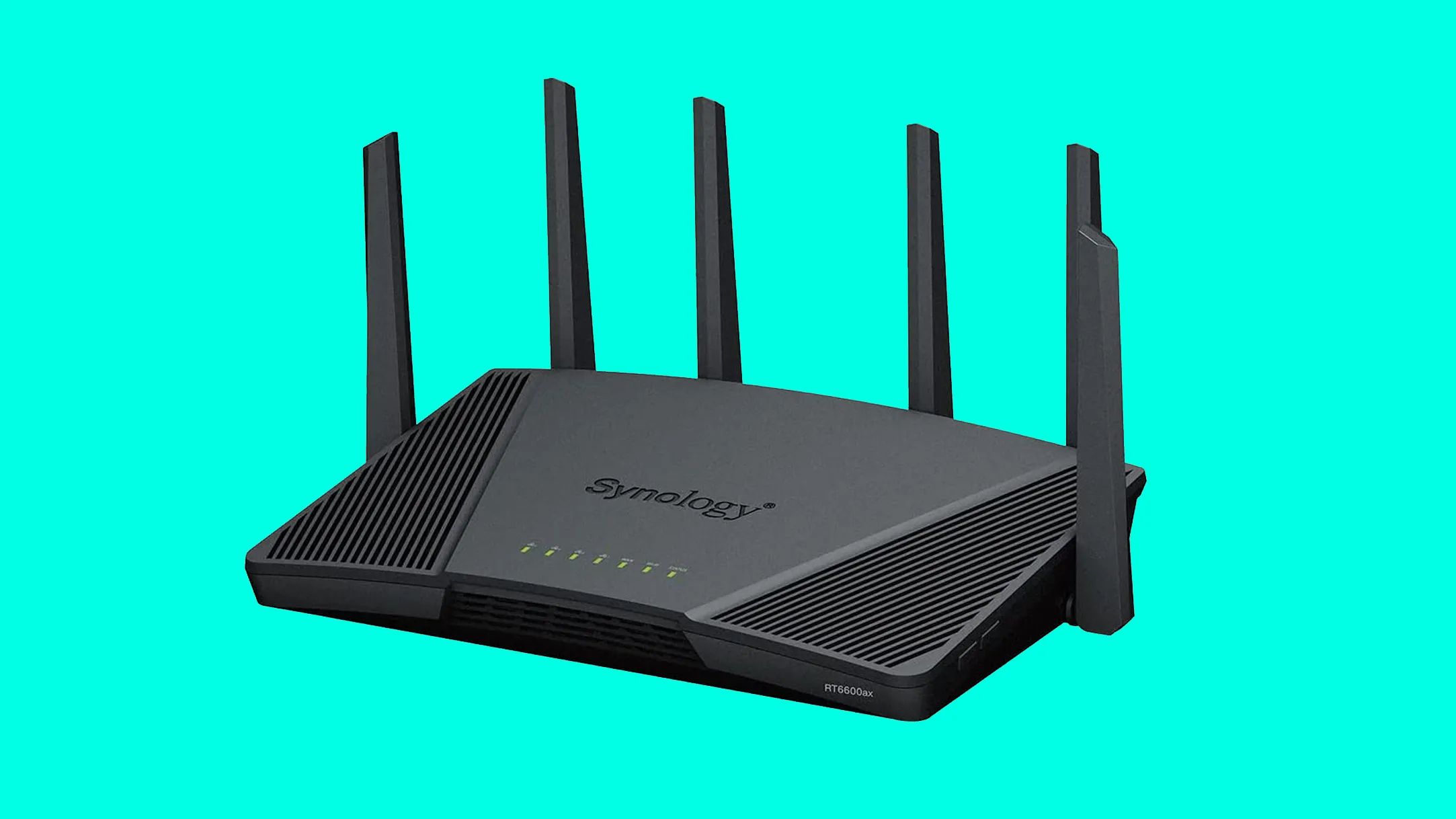Introduction
Understanding the intricacies of IP addresses is essential in today’s digital landscape. Whether you’re a network administrator, a computer science enthusiast, or simply a curious individual, knowing how IP addresses work can greatly benefit you. One important aspect to understand is the classification and notation of IP addresses, particularly the concept of a /24 subnet.
An IP address is a unique numerical identifier assigned to each device connected to a network. It allows devices to communicate and exchange data with each other over the internet. Just like a phone number or home address, an IP address provides a way for computers to locate and connect with one another.
IP addresses are classified based on their version: IPv4 and IPv6. IPv4 is the most commonly used version and consists of four sets of numbers separated by periods. Each set contains decimal values ranging from 0 to 255. For example, 192.168.1.1 is a typical IPv4 address.
To represent IP addresses more efficiently, different notations are used. One common notation is the CIDR (Classless Inter-Domain Routing) notation, which includes a slash followed by a number, such as /24. This notation indicates the subnet mask and provides information about the network and host portions of the IP address.
What Is an IP Address?
An IP address, or Internet Protocol address, is a unique numerical identifier assigned to each device connected to a network. It serves as the device’s “address” in the digital world, allowing it to communicate and exchange data with other devices over the internet.
IP addresses are a fundamental component of the internet infrastructure, enabling the routing of data packets to their intended destinations. They provide a way for computers, smartphones, servers, and other network devices to locate and connect with each other.
IPv4 and IPv6 are the two versions of IP addresses currently in use. IPv4 addresses consist of four sets of numbers, separated by periods, ranging from 0 to 255. For example, 192.168.0.1 is a typical IPv4 address. However, as the number of devices connected to the internet has exponentially increased, the supply of available IPv4 addresses has become limited.
IPv6 addresses were introduced to address this issue. They use hexadecimal values and are significantly longer than IPv4 addresses. Due to their larger address space, IPv6 addresses offer an almost unlimited supply of unique IP addresses, ensuring the continued growth of the internet.
IP addresses are not assigned randomly; they are allocated by Internet Service Providers (ISPs) and regional internet registries. A certain range of IP addresses is assigned to each ISP, who then assigns them to their customers. This hierarchical allocation system helps in effectively managing and routing internet traffic.
IP addresses play a crucial role in various internet-related tasks, such as website hosting, online gaming, VoIP (Voice over Internet Protocol) services, and remote server access. Without IP addresses, the seamless functioning of the internet and interconnectivity between devices would not be possible.
How Are IP Addresses Classified?
IP addresses are classified based on their IP version and the purpose they serve. The two main IP versions in use today are IPv4 and IPv6, each with its own set of characteristics and addressing formats.
1. IPv4: IPv4 addresses are 32-bit numbers represented in dotted-decimal notation, such as 192.168.0.1. The address space of IPv4 is divided into classes: Class A, B, C, D, and E. Class A addresses are used for large networks, with the first octet ranging from 1 to 126. Class B addresses, with the first octet ranging from 128 to 191, are allocated to medium-sized networks. Class C addresses, with the first octet ranging from 192 to 223, are assigned to smaller networks. Class D addresses are used for multicast purposes, and Class E addresses are reserved for experimental use.
2. IPv6: IPv6 addresses are 128-bit numbers represented in hexadecimal format, separated by colons, such as 2001:0db8:85a3:0000:0000:8a2e:0370:7334. IPv6 addresses consist of eight groups of four hexadecimal digits. This version was introduced to address the depletion of IPv4 addresses and provides an immensely larger address space, allowing for the growth of the internet.
IP addresses are further classified based on their purpose:
- Public IP Addresses: These are globally unique addresses assigned to devices connected to the internet directly. Public IP addresses allow devices to communicate with other devices across different networks.
- Private IP Addresses: Private IP addresses are used within local networks, such as home or office networks, and are not routable on the internet. They provide local network addressing and help conserve public IP address space.
- Dynamic IP Addresses: Dynamic IP addresses are assigned by ISPs and can change periodically. These addresses are typically used by individual users or small businesses. Dynamic IP addressing helps efficiently utilize the available IP address pool.
- Static IP Addresses: Static IP addresses are manually assigned to a device and do not change. They are often used by servers, routers, and networked devices that require a consistent and fixed IP address.
Understanding the classification of IP addresses is important for network administrators, IT professionals, and individuals managing network setups, as it helps in proper configuration, security implementation, and efficient network utilization.
Understanding IP Address Notations
IP addresses are represented using different notations, which provide useful information about the network and host portions of the address. Understanding these notations is essential in network administration and troubleshooting.
1. Dotted-Decimal Notation: This is the most commonly used notation for IPv4 addresses. It represents each octet of the IP address as a decimal number separated by periods. For example, 192.168.0.1 is a typical IPv4 address in dotted-decimal notation.
2. CIDR Notation: CIDR, which stands for Classless Inter-Domain Routing, is a compact representation of IP addresses that includes a slash (/) followed by a number. This number indicates the number of network bits in the address. For instance, /24 signifies that the first 24 bits represent the network portion of the IP address. CIDR notation is widely used for routing and subnetting.
3. Hexadecimal Notation: IPv6 addresses are represented in hexadecimal format, consisting of eight groups of four hexadecimal digits separated by colons. For example, 2001:0db8:85a3:0000:0000:8a2e:0370:7334 is an example of an IPv6 address in hexadecimal notation. In this notation, groups of zeros can be compressed by using double colons (::). This shorthand notation makes IPv6 addresses more manageable.
4. Binary Notation: Binary notation represents IP addresses as a sequence of ones and zeros, indicating the individual bits within the address. Although not commonly used in practice, understanding binary notation is crucial for understanding the underlying structure and operations of IP addresses.
By utilizing these different notations, network administrators can efficiently communicate and document IP addresses, identify network segments and subnet masks, and troubleshoot network issues. It’s crucial to be familiar with these notations to effectively manage and maintain networks.
What Is a Subnet?
In networking, a subnet is a logical division of an IP network into smaller, more manageable segments. It allows for efficient allocation of IP addresses and helps in organizing and controlling network traffic.
A subnet is created by configuring a subnet mask, which determines the range of IP addresses that belong to the subnet. The subnet mask is a 32-bit value that uses binary notation or CIDR notation to specify the number of bits reserved for the network portion of the IP address.
Subnetting enables network administrators to:
- Segment a large IP network into smaller subnetworks, improving network performance and reducing congestion.
- Implement security measures by isolating sensitive systems and devices in separate subnets.
- Allocate IP addresses efficiently by dividing them into smaller ranges and minimizing address wastage.
- Manage broadcast traffic by confining it within individual subnets rather than overwhelming the entire network.
Subnetting is typically employed when an IP network has a large number of devices or when specific networking requirements, such as security or performance, need to be met. It allows for better control and management of network resources.
When subnetting an IP network, the subnet mask is used to divide the IP address range into subnets and hosts. For example, in the case of a /24 subnet, the first 24 bits are reserved for the network portion, while the remaining 8 bits are available for host addresses.
Subnetting can be done at multiple levels, creating hierarchical network structures. This allows for efficient management of IP addresses and more granular control over network traffic flow.
Overall, subnets provide a flexible and scalable way to organize and control IP networks. By effectively utilizing subnetting techniques, network administrators can optimize network performance, enhance security, and streamline IP address management.
What Is /24 in IP Address?
/24, commonly referred to as “slash twenty-four,” is a notation used in IP addressing, specifically in CIDR notation, to indicate the subnet mask for a given network. It signifies that the first 24 bits of the IP address are reserved for the network portion, while the remaining 8 bits are available for the host portion.
In CIDR notation, the number following the slash represents the number of network bits in the subnet mask. Since there are 8 bits in each octet of an IPv4 address, a /24 subnet has a subnet mask of 255.255.255.0.
To understand the significance of /24, consider the following example: If we have an IP address of 192.168.1.1/24, it means that the first 24 bits (192.168.1) are reserved for the network, while the last octet (1) is available for host addresses within that network.
Using the /24 notation makes it easier to understand the size of the network and the range of available IP addresses. In this case, the network can accommodate up to 256 potential hosts (2^8), with the range of addresses extending from 192.168.1.0 to 192.168.1.255. The network address (192.168.1.0) and the broadcast address (192.168.1.255) are reserved and cannot be assigned to hosts.
/24 subnets are commonly used in small to medium-sized networks, such as home networks or small offices. They provide a sufficient number of host addresses for typical usage while maintaining a manageable network size.
It’s worth noting that CIDR notation is not limited to /24. Other common CIDR notations include /16 (Class B subnet), /8 (Class A subnet), and various other subnet sizes, depending on the specific network requirements.
Understanding the notation /24 is important when configuring and managing IP networks, especially when dealing with subnetting, routing, and implementing network security measures.
Why Is /24 Important?
The /24 notation, also known as a “slash twenty-four,” holds significant importance in IP addressing and networking. Understanding and utilizing the /24 subnet is crucial for efficient network management, IP address allocation, and addressing individual hosts within a network.
1. Address Allocation: The /24 subnet provides a balance between the number of available host addresses and network size. With a subnet mask of 255.255.255.0, the /24 subnet can accommodate up to 256 unique IP addresses. This allocation of addresses is an optimal choice for small to medium-sized networks, such as homes, small offices, or departments within larger organizations.
2. Efficient Network Management: By utilizing the /24 subnet, network administrators can ensure efficient management and troubleshooting of network resources. Smaller subnet sizes allow for easier identification and isolation of network issues. It becomes more straightforward to track and identify the connected devices within a specific network segment, making it easier to manage and secure the network infrastructure.
3. Subnetting Flexibility: The /24 subnet can be further divided into smaller subnets using subnetting techniques. By subnetting a /24 network, network administrators can create multiple smaller networks within the existing infrastructure. This allows for better network organization, resource allocation, and enhanced security measures.
4. Network Security: The division of networks into /24 subnets aids in implementing security measures, such as segregating networks based on departments or user groups. By separating critical systems or sensitive data into separate /24 subnets, network administrators can control network access and protect sensitive resources effectively.
5. Routing Efficiency: By utilizing /24 subnets, network routing can be optimized, and traffic can be efficiently directed to their intended destinations. Having well-defined and appropriately sized subnets allows for faster and more efficient routing of data packets, reducing overall network congestion.
6. IP Address Management: The /24 notation simplifies IP address management within a network. It provides a clear indication of the network size and available host addresses, aiding in the allocation and tracking of IP addresses. Network administrators can easily assign and manage IP addresses within the /24 subnet, ensuring accurate network documentation and reducing potential conflicts.
In summary, the /24 subnet notation holds significance for efficient network management, address allocation, routing, and implementing security measures. Understanding and utilizing the /24 subnet allows for better organization of networks, easier troubleshooting, and improved overall network performance.
How Is /24 Calculated?
The calculation of a /24 subnet involves determining the range of IP addresses within the network based on the given subnet mask. In the case of a /24 subnet, the subnet mask is 255.255.255.0, indicating that the first 24 bits of an IP address are reserved for the network portion, while the remaining 8 bits are available for host addresses.
To calculate the range of IP addresses in a /24 subnet, follow these steps:
- Identify the network address: The network address is the beginning of the IP address range and represents the network itself. It is obtained by setting all the bits corresponding to the host portion of the IP address to zero. For example, if the IP address is 192.168.1.1/24, the network address would be 192.168.1.0.
- Calculate the broadcast address: The broadcast address is the end of the IP address range and represents a broadcast to all hosts within the network. It is obtained by setting all the bits corresponding to the host portion of the IP address to one. For example, in our case, the broadcast address would be 192.168.1.255.
- Determine the range of assignable host addresses: To determine the range of assignable host addresses, exclude the network address and the broadcast address from the available range. In this example, the range of assignable host addresses would be from 192.168.1.1 to 192.168.1.254.
Understanding the calculation of a /24 subnet is vital for effectively managing IP address allocation and network configuration. It allows network administrators to allocate appropriate IP addresses to devices within the network, ensure proper network segmentation, and optimize routing and security measures.
Examples of /24 Subnets
Let’s explore a few examples of /24 subnets to understand how they are used and how IP addresses are allocated within them.
Example 1:
A small office network requires a subnet for its internal devices. Using a /24 subnet, the network administrator assigns the IP range from 192.168.0.1 to 192.168.0.254, with a subnet mask of 255.255.255.0. This allows for up to 254 assignable host addresses within the network, while the network address is 192.168.0.0, and the broadcast address is 192.168.0.255.
Example 2:
In a home network, a /24 subnet can be used to manage a range of devices. The network administrator assigns the IP range from 192.168.1.1 to 192.168.1.254, with a subnet mask of 255.255.255.0. The network address is 192.168.1.0, and the broadcast address is 192.168.1.255. This configuration allows for up to 254 devices to be connected to the network.
Example 3:
In a classroom environment, a /24 subnet can be utilized to provide connectivity to student devices. The network administrator assigns the IP range from 10.0.0.1 to 10.0.0.254, with a subnet mask of 255.255.255.0. The network address is 10.0.0.0, and the broadcast address is 10.0.0.255. This setup allows for up to 254 student devices to have unique IP addresses within the classroom network.
These examples demonstrate some scenarios where /24 subnets are commonly used. The allocation of IP addresses within a /24 subnet ensures that the network can accommodate a sufficient number of devices while maintaining efficient addressing and routing capabilities.
It’s important to note that /24 subnets are just one of many possible subnet sizes that can be used, depending on the specific requirements of the network. Understanding subnetting and choosing the appropriate subnet size is crucial for network administrators to effectively manage their networks.
Conclusion
Understanding IP addressing and subnetting is vital for network administrators, IT professionals, and anyone working with computer networks. The /24 subnet, with its subnet mask of 255.255.255.0, plays a significant role in network management and efficient IP address allocation.
The /24 subnet allows for up to 254 host addresses within a network, making it suitable for small to medium-sized networks such as home networks, offices, and departmental networks. It strikes a balance between the number of available host addresses and network size, enabling efficient management and troubleshooting.
Furthermore, the /24 subnet is crucial in segmenting networks, implementing security measures, optimizing routing, and ensuring effective network administration. It facilitates better organization, resource allocation, and improved overall network performance.
By understanding the calculation and utilization of /24 subnets, network administrators can allocate IP addresses effectively, optimize network resources, enhance security measures, and streamline IP address management. This knowledge enables them to configure and manage networks more efficiently and troubleshoot network issues more effectively.
In conclusion, the /24 subnet serves as an important building block in network infrastructure and IP address management. Its versatility and efficiency make it a popular choice for various network deployments, helping to ensure seamless communication and connectivity in the digital world.

























